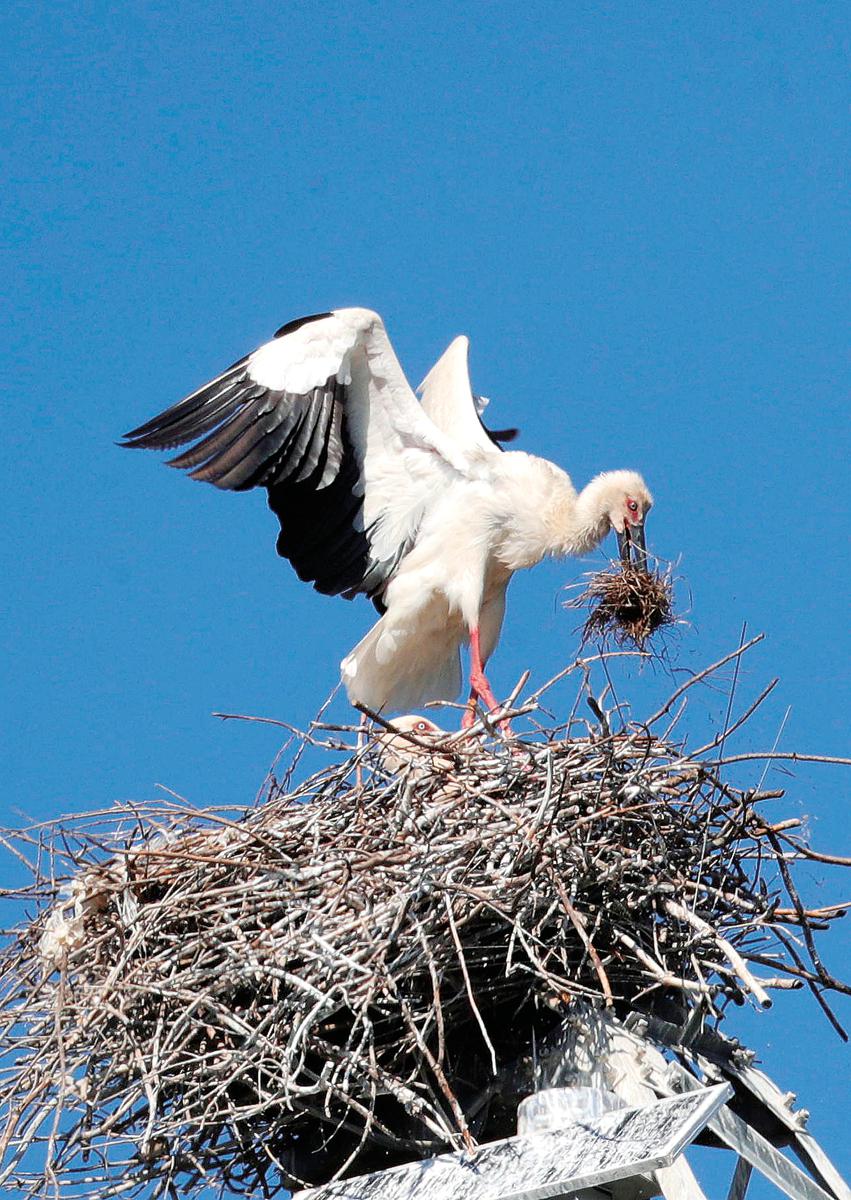Oriental white storks found nesting, breeding in Shanxi
First time for birds to be seen so far south in summer


Oriental white storks were observed nesting and breeding for the first time in North China's Shanxi province recently, a clear testament to the increasing numbers of this rare species and the success of local environmental protection efforts.
The Oriental white stork is a first-class animal under State protection. With limited breeding grounds and a global estimated population between 7,000 and 9,000, it has been classified as endangered by the International Union for Conservation of Nature.
On May 9, Chai Run, a 61-year-old wildlife photography enthusiast and conservation volunteer from Yunzhou district in Datong city, was photographing on the northern bank of the Sanggan River when he found that two Oriental white storks had built a nest atop a high-voltage transmission tower.
The storks are wading birds typically found in shallow water areas along lake edges, primarily feeding on fish and shrimp. Chai said that while Oriental white storks typically prefer nesting on cliffs, the increasing trend of them nesting on power towers across the country might be due to a perceived sense of safety.
The Sanggan River National Wetland Park in Datong is a crucial stopover site on the migratory route of many birds. With improvements in the environment, the park is home to over 100 bird species, including seven first-class protected birds such as the black stork and the Oriental white stork.
Oriental white storks migrate, with their breeding grounds mainly in Russia's Far East and northeastern China, and their wintering grounds in places like the Yellow River Delta in China. They arrive in southern China each October and migrate northward again by March.























